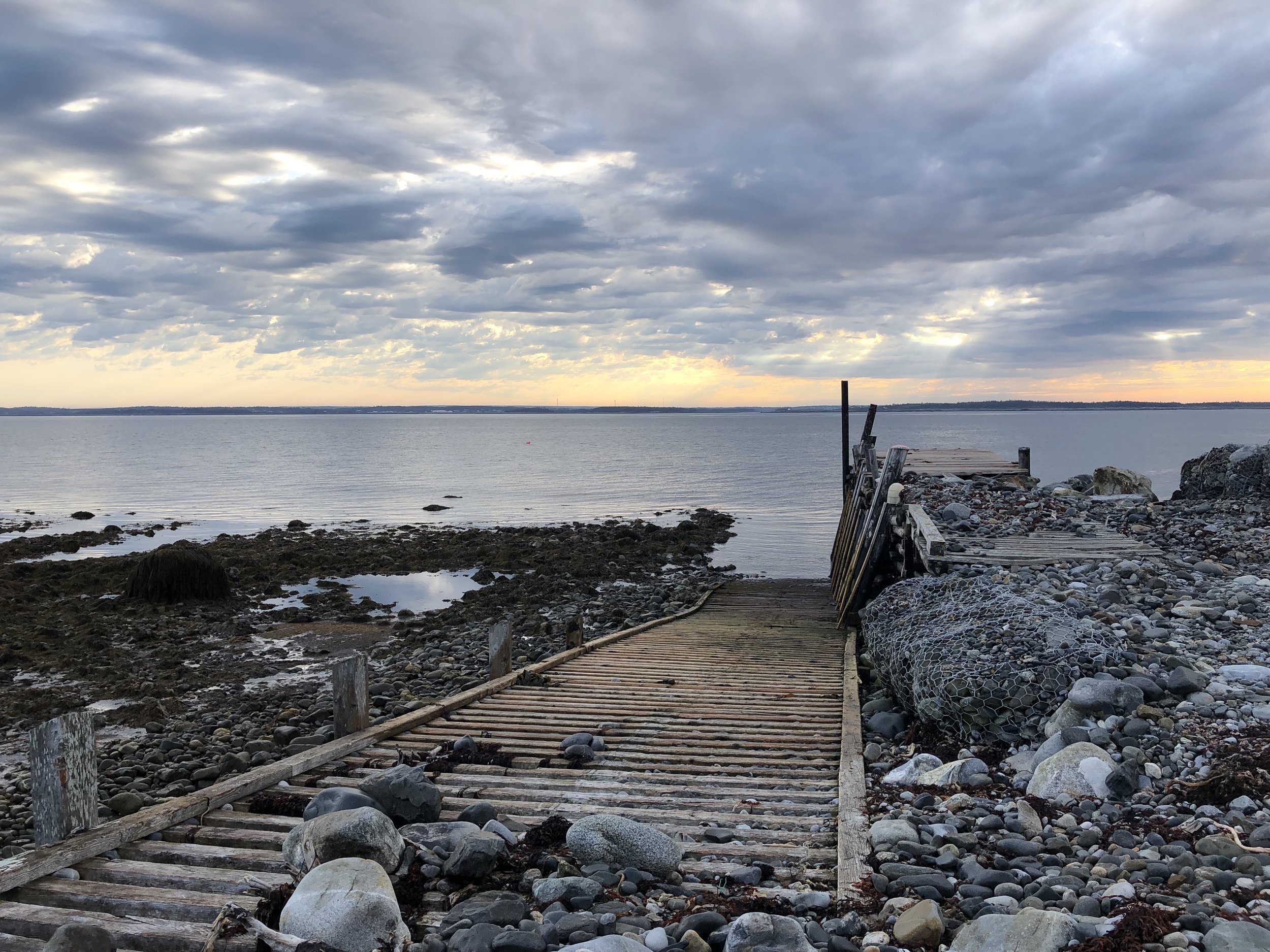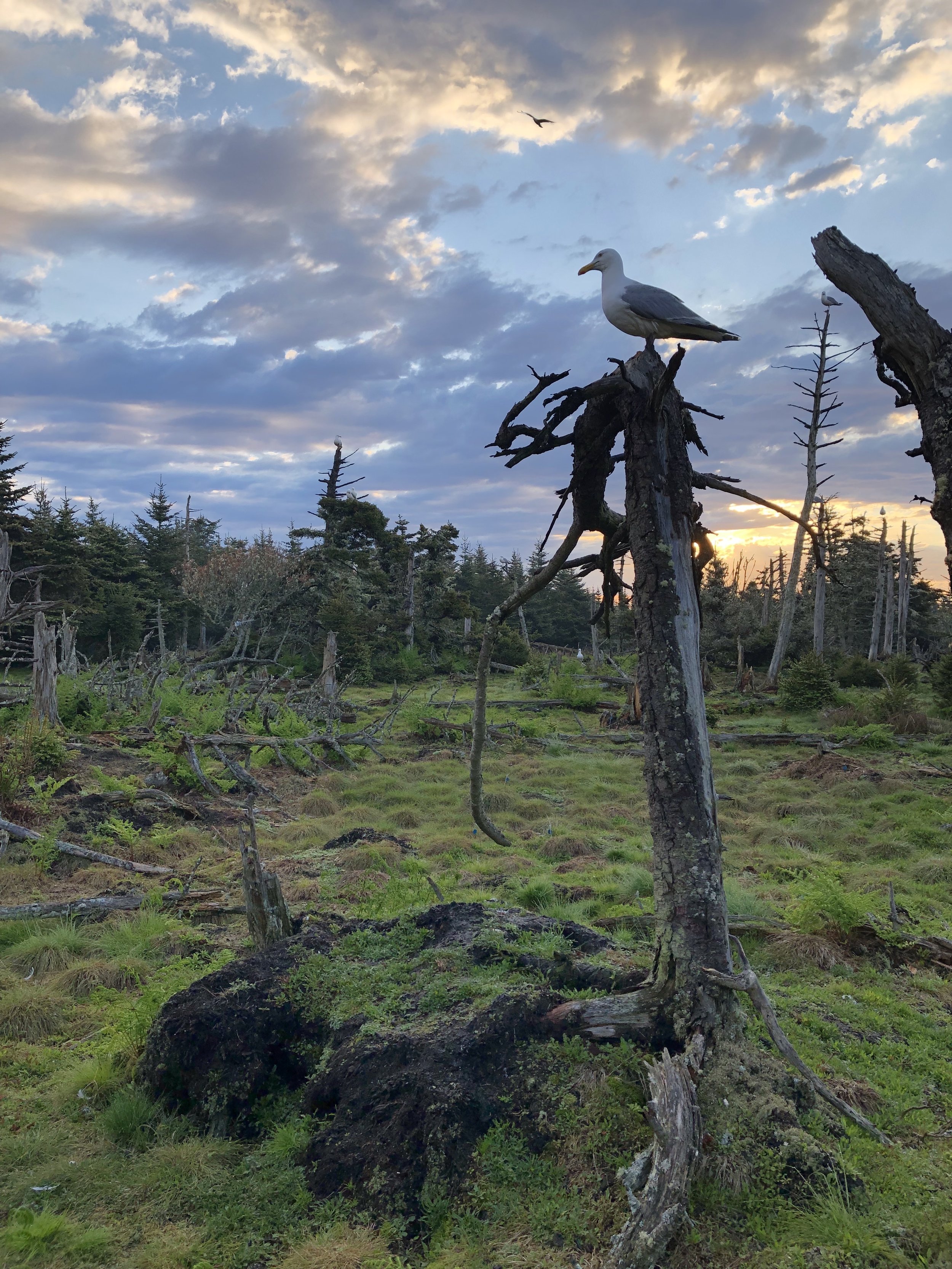It is late summer as I sit here in my living room. The weather shifted last night, and a gloriously clear and cool breeze is sweeping through the house. Fall is definitely in the air, although there will be a few more hot, humid days to come. Next to me is a steaming mug of very special nettle tea - made from young nettles harvested back in June on the rocky beach of Bon Portage Island. It smells much like fiddleheads, green and herbaceous, and tastes life-giving. I had my first cup of tea from these nettles back in June, made on a propane stove in a cozy cabin, sitting on a sunny deck with a group of people I had just met.
But the story really begins at my son’s Tae Kwan Do tournament at Evelyn Richardson Memorial Elementary School in Shag Harbour, last summer. Although I visit most schools in the area for my work, I have never had a student at that particular school. It’s perched at the rocky edge of the ocean; a setting that would be envied by most. In the lobby, a display honouring Evelyn Richardson, school namesake, held a copy of her book, We Keep a Light. I requested it from the library that day, and had it in my hands a few days later. As I read it, I was transported to another time, and a world so familiar and yet new unfolded before me. I fell in love with the island through her writing, never thinking that I would have the chance to set foot on it.
Fast forward to this spring, when I saw in an email newsletter that the Nova Scotia Nature Trust (NSNT) was organizing a weekend trip to the island, now owned by Acadia University, for volunteers to do some work and learn about the island. I couldn’t sign up fast enough. When I first found out I would be visiting the island, I told my neighbour. Her face lit up. “Well, have I got a story for you! Let me put the tea on.” Back when Evelyn and Morrill Richardson were the lightkeepers, she visited the island with her father, who was a minister. She painted the most beautiful image of her day’s trip, waking early for the long drive, and Evelyn making a picnic spread of fried chicken and salads for their guests on the lawn by the light. And so, on a weekend in early June, what feels like both yesterday and years ago, with much enthusiasm I tossed my pack onto the deck of a fishing boat and set off toward the island with 19 strangers.
Along with the 16 volunteers were three NSNT staff and a student who researches predation of the Leach’s Storm Petrel, the bird celebrity of the island. The petrels also had nests under the cabins, and at night as the birds came and went, we could hear them telling their mates all about their adventures. (You can hear what they sound like here.) We saw many nesting gulls, and sweet little fuzzy speckled babies. Birds are not an area of expertise for me but I loved seeing the enthusiasm of the birders on the trip, who whipped out binoculars, field guides, pencils and notebooks to document their sightings.
We worked together to build boardwalks to keep feet on pathways and away from nesting areas, ate leisurely meals cooked outside on camp stoves, and sat around the campfire, learning about the island, the birds, and the work of the NSNT. It was easy and relaxed, fascinating and beautiful. I can’t overstate: this was the loveliest group of people - generous, kind people who love this province and appreciate the beauty and interconnected complexities of nature.
Although I expected the usual beach debris - rope, buoys, plastic jugs and containers - I was not prepared for the volume of fishing gear on the beaches. Hundreds of old lobster pots littered the beaches. Cropping it out of pictures is pretty easy to do, but I made a point to include it in some. Rielle, who researches the birds and spends a lot of time on the island mentioned that she had recently found a bamboo fork on the beach - which seems small in comparison to the rest of the plastic waste, but does offer a small glimmer of hope.
All weekend, I kept thinking back and wondering what the island was like when Evelyn was living and working there. Divots in the earth by the ‘new’ light station outline the foundation where the original lighthouse stood. A thick ring of spent daffodils made my heart flutter a bit when I realized that she could have planted them; perhaps a gift from a mainland friend’s garden that multiplied over space and time, much like We Keep a Light.
The book We Keep a Light won the Governer General’s Award for creative non-fiction in 1945. Evelyn died in 1976. You can learn more about Evelyn Richardson here.
The Nova Scotia Nature Trust’s involvement with the island is explained here.
The CBC’s Colleen Jones was also on the trip, and wrote this piece about the weekend.










